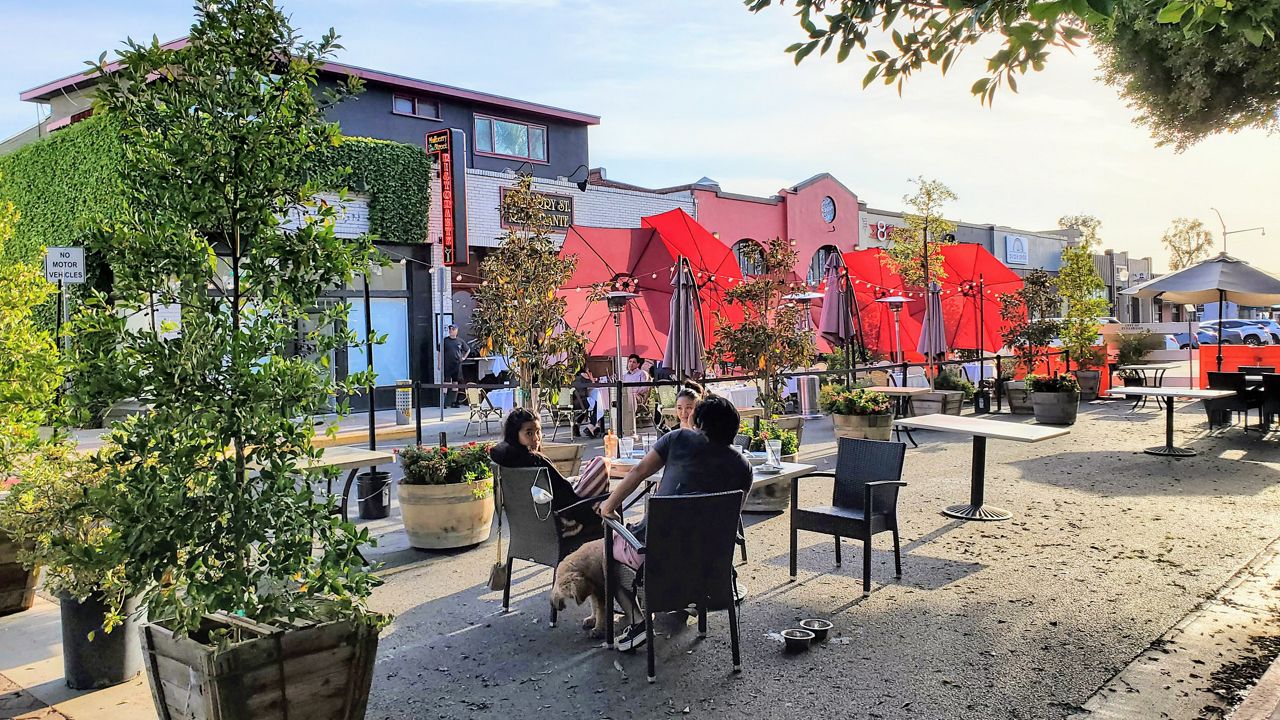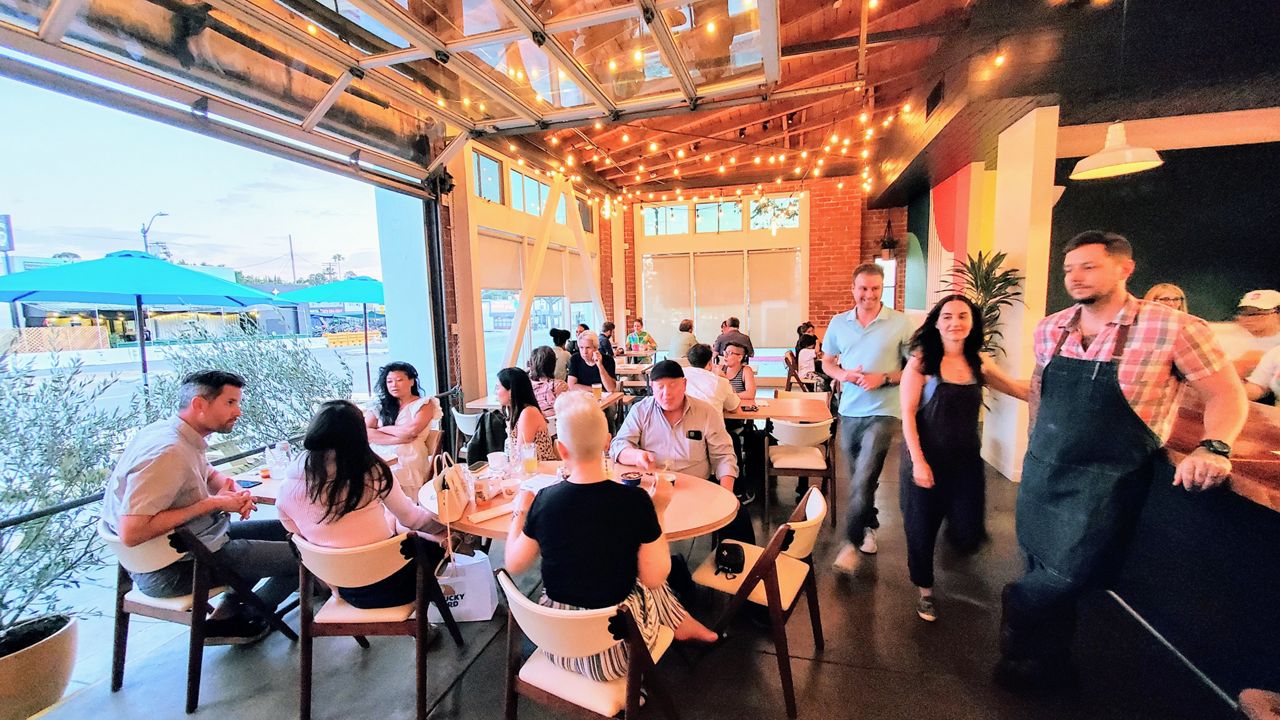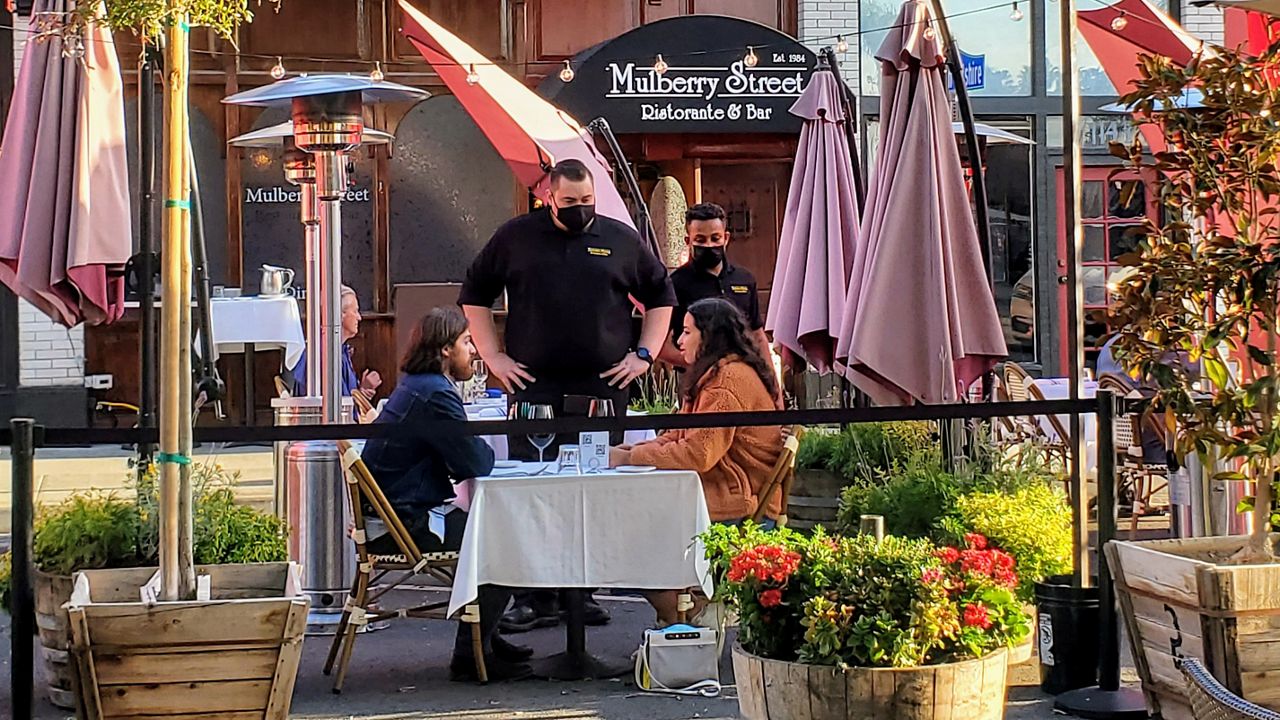LAKE FOREST, Calif. — The calls began to pick up in recent weeks.
Matthew Godman, a retail broker at Cushman & Wakefield, said demand from entrepreneurs for restaurant spaces with an outdoor dining component has spiked within the past three weeks.
In the past month, Cushman leased two restaurant spaces in Lake Forest, with the owners of both requiring space for outdoor dining.
"Last year, we had people looking, but they weren't serious due to the uncertainty surrounding COVID," Godman said. "They were looking for steal deals. But just recently, we've seen realistic tenants looking and ready to move no matter the cost, knowing that things will pick up."
Greg Briest, vice president of retail at JLL, is fielding the same calls and noticing the high demand.
"More than anything right now, due to the pandemic and the world that we live in, there's a higher demand than ever for second-generation restaurants that have outdoor space or patio," Briest said. A second-generation restaurant is a term commercial real estate professionals use to describe a restaurant space already built out and might need some renovations.
And why not? Briest said, adding that Southern California has the perfect climate for outdoor dining.
"We have amazing weather. People want to be outdoors. They want to enjoy the sunshine even in a pandemic," he said.

Once a means for survival to stay afloat from the economic fallout of the coronavirus pandemic, outdoor or Al Fresco dining could become a permanent fixture in Southern California's restaurant scene. But as the pandemic wanes and the state's economy fully reopens, will cities take back those parking spaces are necessary to allow the outdoor dining setups to continue?
Restaurants were hit hard by the pandemic. The state prohibited large indoor gatherings, and as a result, the restaurant industry suffered. Some closed, and others adjusted to a take-out model.
As a way to keep restaurants afloat, cities and local municipalities that had either banned indoor dining or limited capacity, for most of the past year, relaxed some rules that allowed owners to set up dining tables outdoors, on sidewalks, parking lots and public spaces.
As a result, cities saw restaurant owners surviving, and a popular, vibrant open-air, outdoor scene emerged. For example, some streets in downtown Fullerton and Huntington Beach were closed, and the restaurants hung Edison's lights, tables, and other decorations in the streetscape.
The pandemic revealed many things about the restaurant industry and what consumers wanted: take out, delivery and outdoor dining, said Rick Wetzel, the founder of Wetzel's Pretzels and Blaze Pizza.
Wetzel most recently worked with Los Angeles to set up outdoor dining for a new restaurant in Eagle Rock, called Lucky Bird.
"It just makes sense," Wetzel said as he sat inside Lucky Bird, which has a garage door that rolls up to the ceiling to give guests an indoor/outdoor dining experience. "What you're seeing is a repurposing of the parking spaces and the sidewalks."
But with California fully reopening on June 15 and many pandemic-related restrictions that limited indoor dining lifted, some cities are looking to take back those parking spaces.
Earlier this month, the San Clemente City Council approved a plan to charge restaurant owners who took over parking spaces for outdoor dining along Avenida Del Mar, $200 per parking spot a month if they wanted to continue the outdoor setup.
"The program was initially intended to help these businesses recover loss of capacity, and on June 15, they'll be able to recover that capacity," Economic Development Officer Jonathan Lightfoot said to the city council, according to SC Times. "But we've also learned from the past year that the community enjoys this amenity so there's public benefit in retaining that element."
On Tuesday, Anaheim took a different approach. Same with Newport Beach, which extended temporary use permits for outdoor dining, the LA Times reported.
"We know that many Anaheim restaurants and businesses are still recouping losses seen during the closures and restrictions brought on by the pandemic," said Erin Ryan, an Anaheim spokeswoman. "As part of our business-friendly approach and the Anaheim Economic Recovery Plan, we have extended, by way of an executive order, the opportunity for businesses to continue with outdoor dining through the end of the year."
The City of Los Angeles is also continuing the Al Fresco program that it established last year.
The program streamlines the permitting for businesses that want to set up outdoor seating on parking lots, sidewalks and street parking spaces.
Wetzel, who recently went through those approvals with the city, said he was very impressed with the process. He commended the city and the Alcoholic Beverage Control for streamlining the approvals.
"All of the government entities are working hard to keep restaurants viable," Wetzel said.

Godman, the commercial real estate broker, said many of the prospective clients he speaks with looking for restaurant space believe cities will be slow to take patio space back.
Godman added that demand for such space is high, but inventory is low.
"We expect we will continue to see the demand with a shortage of supply continue into mid-fall, 2021," he said.
Wetzel said people love outdoor dining and believe it's here to stay for the long run.
"We sat in the rain in tents," Wetzel said. "We sat outdoors on the coldest days. We learned how to enjoy a meal outside, and I think that's a habit that we're not going back on."



